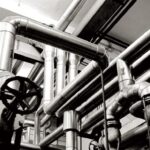Concrete walls are a common feature in many buildings, providing strength and durability.
However, over time, these walls can suffer from damage due to various factors such as water, age, and structural issues.
Identifying and repairing these concrete structural issues is crucial to maintaining the integrity of the structure. Today we will explore the causes of damage to concrete walls, how to identify signs of damage, the different types of repairs available, and how to prevent future damage.
We will also discuss when to hire a professional for concrete repairs in Brantford and Southern Ontario and the cost associated with such structural wall repairs.
If you’re looking to learn more about maintaining and repairing concrete walls, this article is for you.
What Are Concrete Walls?
Concrete walls are essential components of many structures, providing stability, durability, and a versatile surface for various applications.
The construction of concrete walls involves the use of cement, water, and aggregates. This creates a strong and stable structure that can withstand various environmental conditions.
The surface properties of concrete walls can be customized to achieve different finishes, ranging from smooth to textured, making them suitable for both interior and exterior design.
This versatility allows for their use in residential, commercial, and industrial settings, contributing to the overall durability and structural integrity of the built environment.
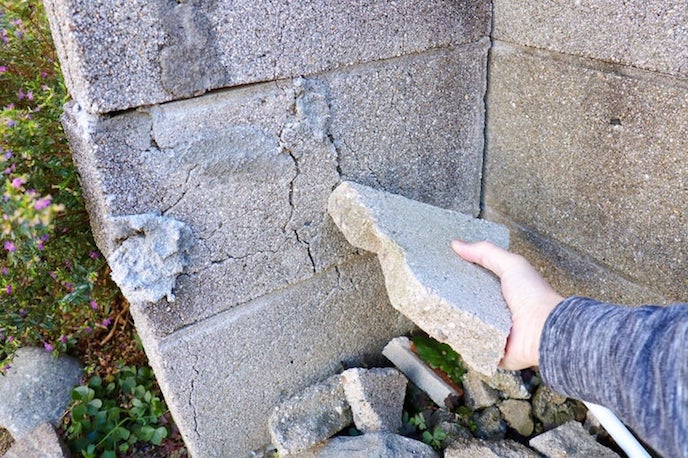
What Causes Damage to Concrete Walls?
Several factors contribute to the damage and deterioration of concrete walls. This makes timely repairs and maintenance crucial to ensure their structural integrity and aesthetic appeal.
Water infiltration, freeze-thaw cycles, chemical exposure, and poor construction practices are common culprits in the deterioration of concrete walls. Water seepage can lead to corrosion of reinforcement, while freeze-thaw cycles cause expansion and contraction, leading to cracks.
Chemical exposure, such as from de-icing salts or atmospheric pollutants, can degrade concrete. Inadequate construction practices, like insufficient reinforcement or improper curing, can also contribute to concrete wall damage.
Regular inspections, repairs, and protective coatings are essential for preserving the strength and longevity of concrete walls.
Water Damage
Water damage poses a significant threat to concrete walls, requiring effective sealant application and waterproofing measures to mitigate potential issues and preserve the wall’s integrity.
This is particularly crucial in protecting the concrete walls from cracks, erosion, and structural degradation that can result from prolonged exposure to moisture.
Sealant application forms a protective barrier, preventing water intrusion and reducing the risk of mold and mildew growth.
Incorporating waterproofing techniques such as membrane systems or crystalline coatings can enhance the wall’s resilience against water damage, ensuring its longevity and structural stability.
By prioritizing these preventive measures, property owners can safeguard their concrete walls and avoid costly repairs in the long run.
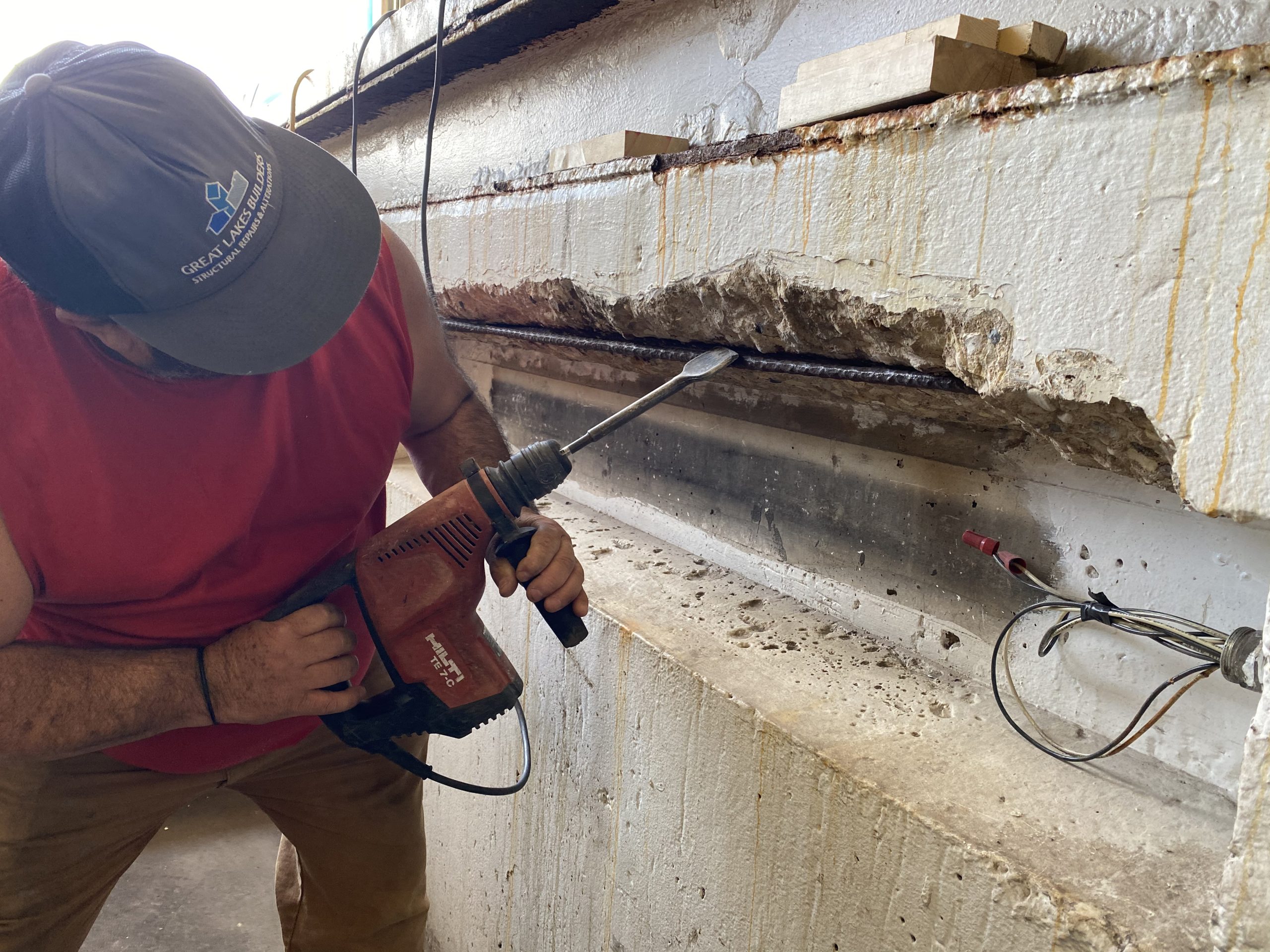
Age and Wear
The natural aging process and wear can lead to the deterioration of concrete walls, emphasizing the need for regular maintenance and proactive measures to extend their lifespan and functionality.
Over time, concrete walls can be affected by various factors such as weathering, moisture penetration, and structural stress, which can contribute to cracks, spalling, and weakening of the material.
Regular inspections, timely repairs, and applying protective coatings are essential to mitigate these effects and prevent further deterioration.
Integrating proper drainage systems and addressing underlying issues like soil movement can significantly prolong the integrity of concrete walls, ensuring their long-term stability and strength.
Structural Issues
Structural issues, such as inadequate reinforcement or compromised strength, can threaten the stability and safety of concrete walls, necessitating prompt assessment and appropriate reinforcement.
This can lead to potential risks, including structural failure or collapse, which underscores the importance of early identification and remediation.
Proper reinforcement techniques, such as adding steel bars or fibre reinforcement, can greatly enhance the strength and durability of concrete walls.
Integrating strategic elements, like buttresses or tie beams, into the wall design can mitigate potential weaknesses and bolster overall structural integrity.
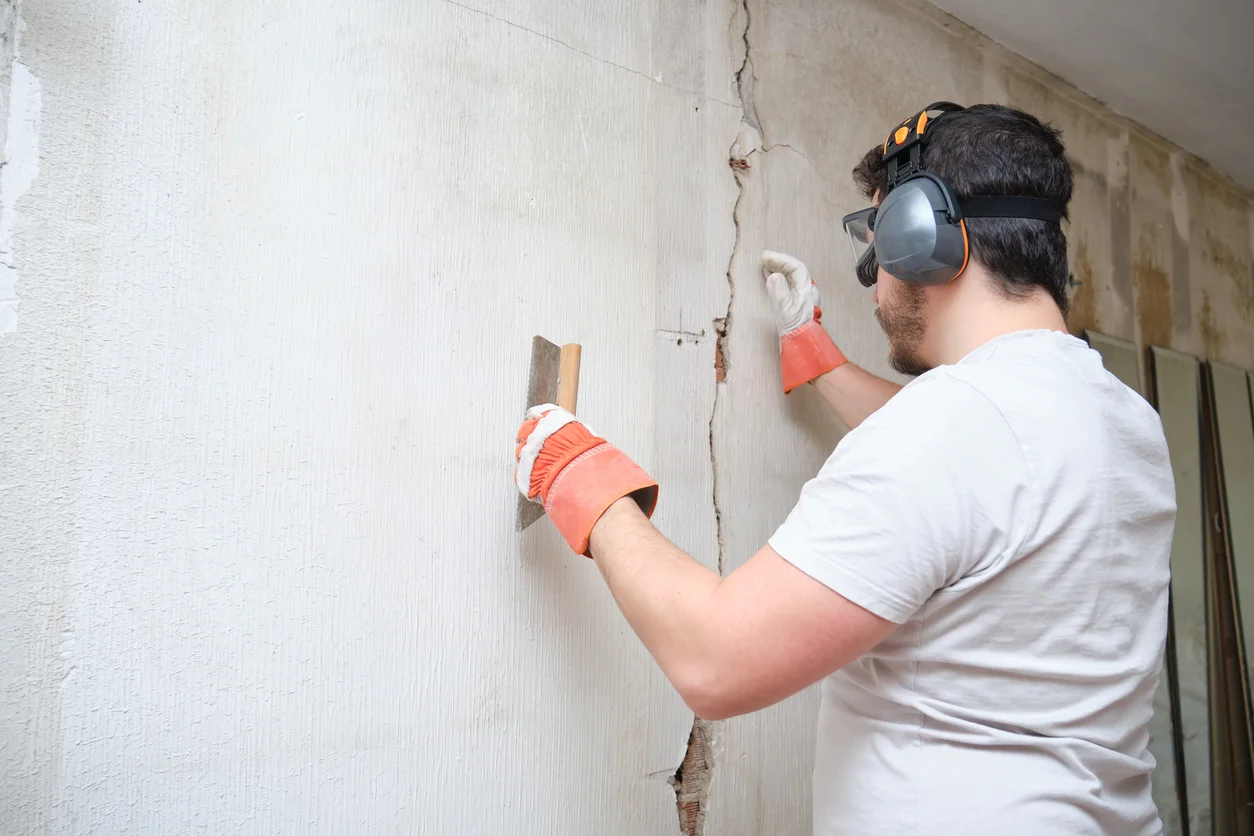
How Can You Identify Damaged Concrete Walls?
Identifying damaged concrete walls involves recognizing telltale signs such as cracks, leaks, and discoloration, which indicate underlying issues requiring attention and repair.
These signs can be an indication of structural damage, water infiltration, or degradation of the concrete.
Cracks can form due to shifts in the foundation or exposure to extreme weather conditions, while leaks may point to deteriorating waterproofing. Discoloration could be a sign of mold or mildew growth.
It’s crucial to inspect these signs carefully and promptly address any underlying problems to prevent further deterioration and costly repairs.
Cracks
Cracks in concrete walls demand thorough assessment and effective patching techniques to prevent further deterioration and maintain the wall’s structural integrity.
When cracks are left unaddressed, they can lead to water infiltration, which can weaken the concrete and compromise the stability of the structure.
Therefore, conducting a comprehensive assessment to identify the root cause of the cracks is crucial.
Once assessed, utilizing appropriate patching techniques, such as epoxy injection or cementitious mortar, becomes essential to restore the wall’s strength and durability.
Proper patching not only serves to repair the visible damage but also prevents potential issues from developing in the future.
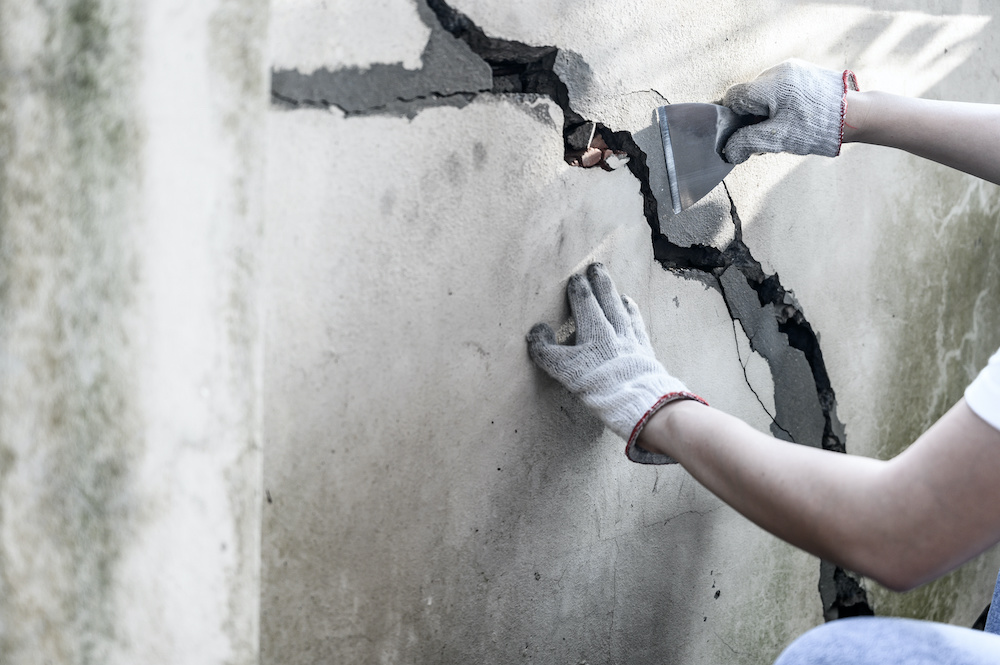
Leaks
Detecting and addressing leaks in concrete walls is crucial to prevent water damage and structural compromise, necessitating thorough inspection and targeted remediation efforts.
Water leakage in concrete walls can lead to extensive damage over time, affecting the integrity of the entire structure. Regular inspection and maintenance become essential to catch and fix leaks early, preventing costly repairs and preserving the building’s stability.
Incorporating advanced technologies like thermal imaging and moisture meters can aid in identifying hidden leaks, ensuring comprehensive remediation to safeguard against potential water intrusion.
Discoloration
Discoloration on concrete walls can signify underlying damage, requiring thorough cleaning and assessment to address potential issues and restore the wall’s aesthetic appeal.
It is crucial to understand that discoloration can be an indication of more serious structural concerns, such as water infiltration, mold growth, or surface erosion.
Proper cleaning methods, including pressure washing or chemical treatments, are essential to eliminate any contaminants and restore the concrete’s original color.
A comprehensive assessment by a professional can help identify the root cause of the discoloration and prevent future damage.
Addressing discoloration promptly not only enhances the visual appeal of the concrete but also preserves its structural integrity.
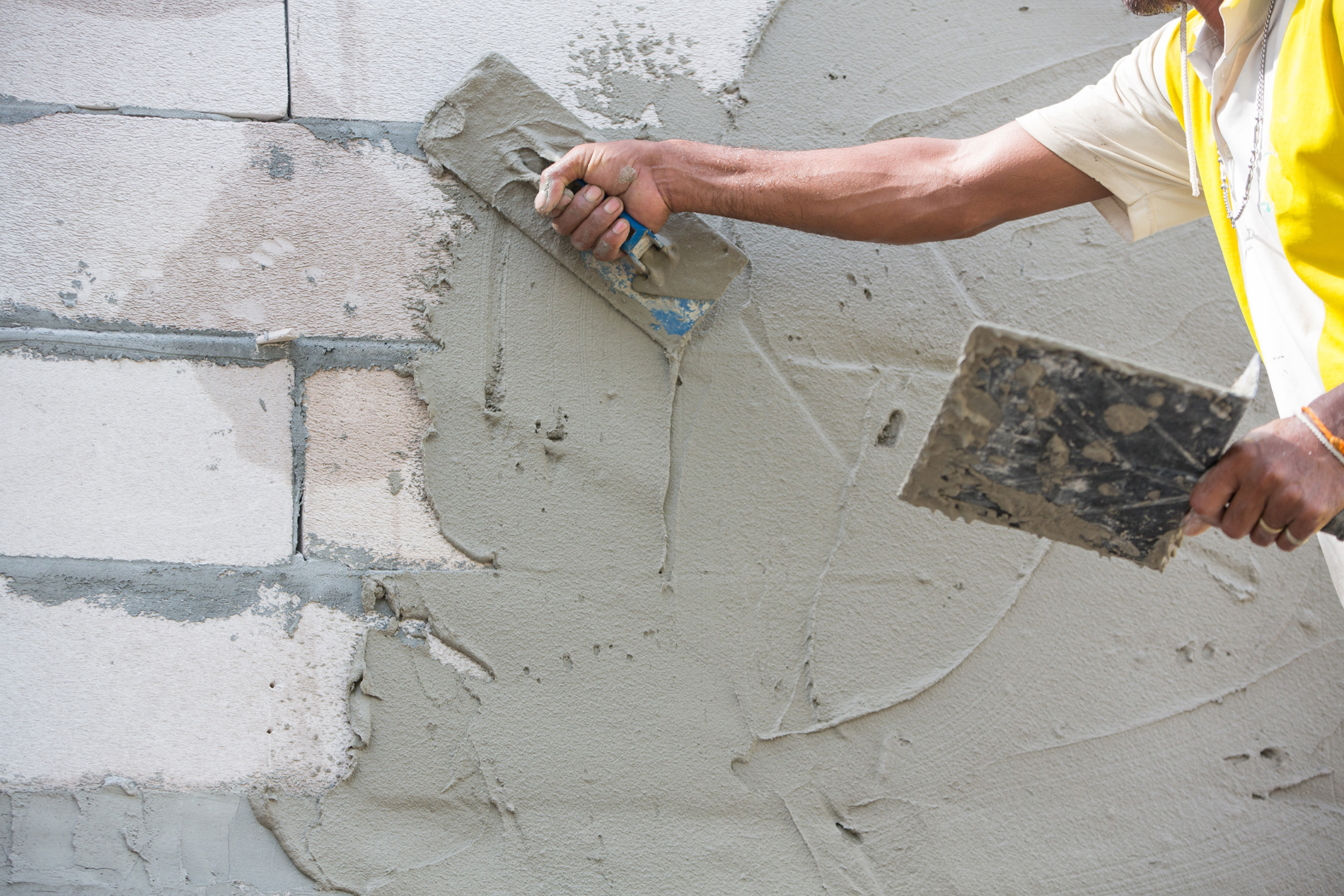
What Are the Different Types of Concrete Wall Repairs?
Concrete wall repairs encompass various techniques, including patching cracks, waterproofing, and the potential replacement of damaged sections, tailored to address specific forms of damage and deterioration.
Patching cracks involves filling and sealing the damaged areas with specialized concrete or mortar mix. This ensures a seamless surface and helps to prevent further damage.
Waterproofing is also essential for preventing moisture intrusion. This can be achieved by using durable sealants or coatings to protect the concrete from water damage.
In cases of extensive deterioration, potential replacements may be necessary. This requires careful demolition of the damaged sections and precise installation of new concrete elements to restore structural integrity.
Patching and Filling Cracks
Patching and filling cracks in concrete walls involves meticulous application and curing processes to reinforce the affected areas and restore the wall’s structural integrity.
The first step in this process is to thoroughly clean the cracked area and remove any debris or loose material. Once the surface is clean and dry, a bonding agent is applied to ensure proper adhesion between the existing concrete and the patching material.
After the application of the patching compound, it is smoothed out and allowed to cure according to the manufacturer’s instructions. This curing process is crucial to ensure the strength and durability of the repair.
Once fully cured, the patched area can be sanded and painted to match the surrounding concrete, providing a seamless finish.
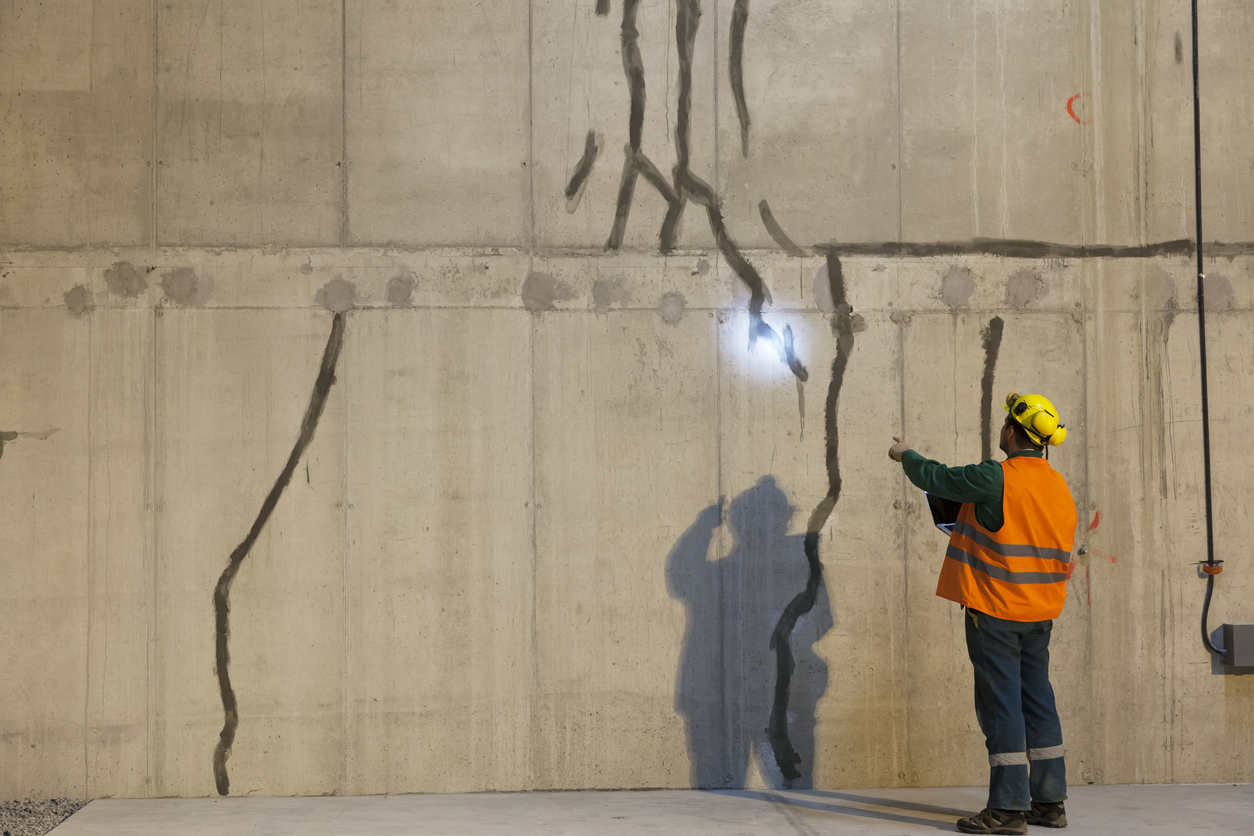
Waterproofing and Sealing
Basement waterproofing and sealing concrete walls necessitate the use of specialized materials and techniques to create a protective barrier against moisture and potential water damage, enhancing the wall’s longevity and resilience.
This process is crucial for maintaining the structural integrity of the concrete and preventing issues such as mold growth and efflorescence. This is especially needed in our temperate climate here in Brantford, Ontario.
Common materials used for waterproofing and sealing include silicone-based sealants, acrylic-based coatings, and cementitious waterproofing products.
Techniques such as surface prepping, crack repair, and the application of waterproof membranes are essential to ensure a thorough and effective seal.
By utilizing these materials and techniques, concrete walls can withstand harsh weather conditions and remain durable for years to come.
Replacing Damaged Sections
Replacing damaged sections of concrete walls involves a meticulous process and reinforcement to ensure seamless integration and structural strength, effectively addressing localized issues and preserving the wall’s functionality.
The process typically begins with carefully assessing the extent of the damage to determine the appropriate steps for repair. Once the damaged section is identified, it needs to be removed, ensuring that the surrounding structure remains intact.
Reinforcement efforts are then crucial, often involving the addition of steel bars or mesh to enhance the structural integrity of the repaired area.
The new concrete is carefully poured and finished to seamlessly integrate with the existing wall, ensuring that the repaired section blends in aesthetically while providing the necessary reinforcement.
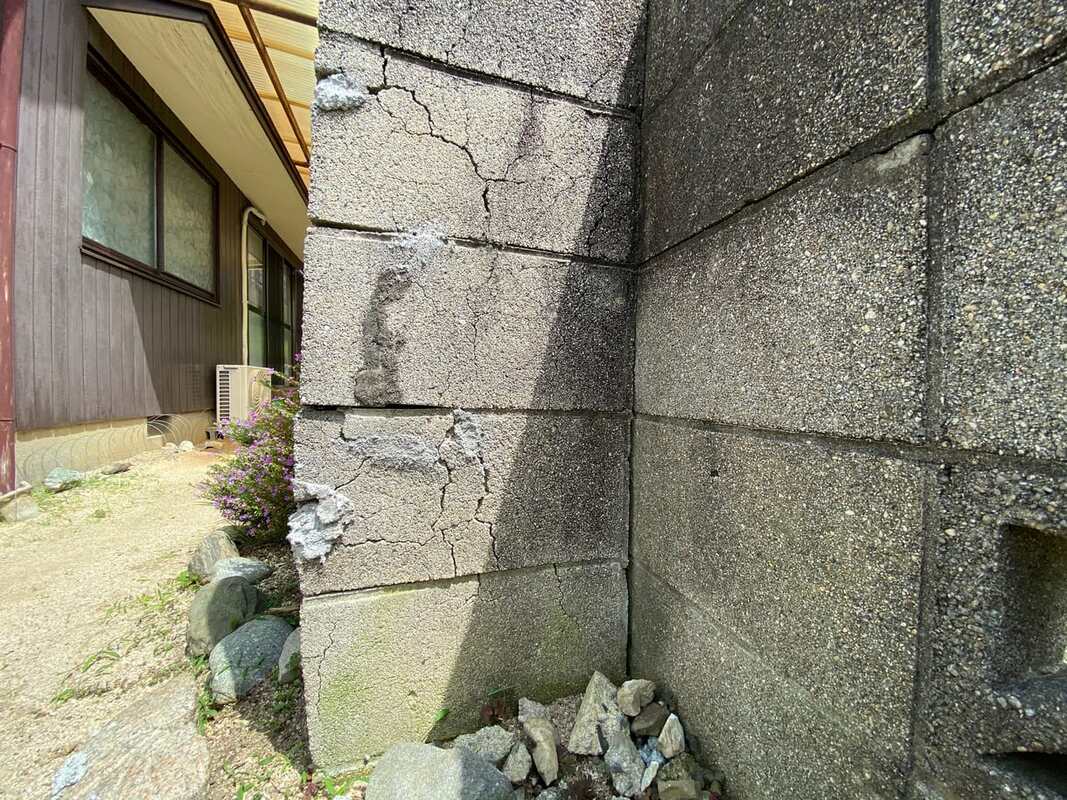
How Can You Prevent Future Damage to Concrete Walls?
Preventing future damage to concrete walls requires proactive measures such as regular inspections and diligent maintenance practices to identify and address potential issues before they escalate.
This preventive approach not only ensures the structural integrity of concrete walls but also minimizes the need for costly repairs or replacements down the line.
Regular inspections allow for the early detection of cracks, water damage, or other signs of deterioration, enabling prompt action to be taken.
Incorporating proper maintenance practices, such as waterproofing and sealing, can significantly extend the lifespan of concrete walls, ultimately saving time and money in the long run.
Regular Inspections
Regular inspections of concrete walls involve comprehensive assessment techniques to detect early signs of damage or deterioration, enabling timely intervention and proactive maintenance strategies.
These assessments typically encompass visual inspections, non-destructive testing, and monitoring structural integrity.
Timely identification of issues such as cracks, spalling, or corrosion is crucial to prevent further damage and avoid costly repairs.
By implementing advanced assessment techniques like ultrasonic testing or ground-penetrating radar, professionals can accurately evaluate the condition of concrete walls and plan necessary maintenance.
These proactive measures not only ensure structural stability but also prolong the lifespan of concrete walls, making regular inspections an indispensable aspect of facility management and safety protocols.
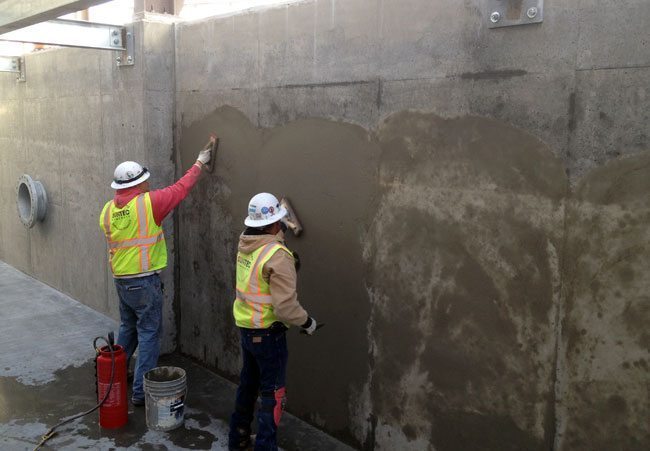
Proper Maintenance
Proper maintenance of concrete walls encompasses cleaning, reinforcement, and suitable upkeep practices to preserve their aesthetics and structural integrity, minimizing the risk of potential damage.
Regularly cleaning concrete walls helps to prevent the build-up of dirt, mold, and mildew, which can compromise their appearance and structural stability.
Reinforcing concrete walls through methods such as applying sealants or incorporating rebar can greatly enhance their durability and resistance to external forces.
By implementing these maintenance strategies, property owners can prolong the longevity of their concrete walls and minimize the need for costly repairs in the future.
Addressing Issues Promptly
Promptly addressing issues with concrete walls, such as repairs and deterioration, is crucial to prevent escalation and ensure the long-term stability and functionality of the structure.
This proactive approach helps in averting potential dangers associated with structural integrity, avoiding costly and extensive repairs in the future. It is essential for maintaining the aesthetic appeal of the building and safeguarding against environmental factors.
Neglecting such concerns can lead to gradual deterioration and compromise the safety of the overall structure, making it imperative to address any signs of wear or damage promptly.
Timely repairs can extend the lifespan of the concrete walls and contribute to the sustainable use of resources.
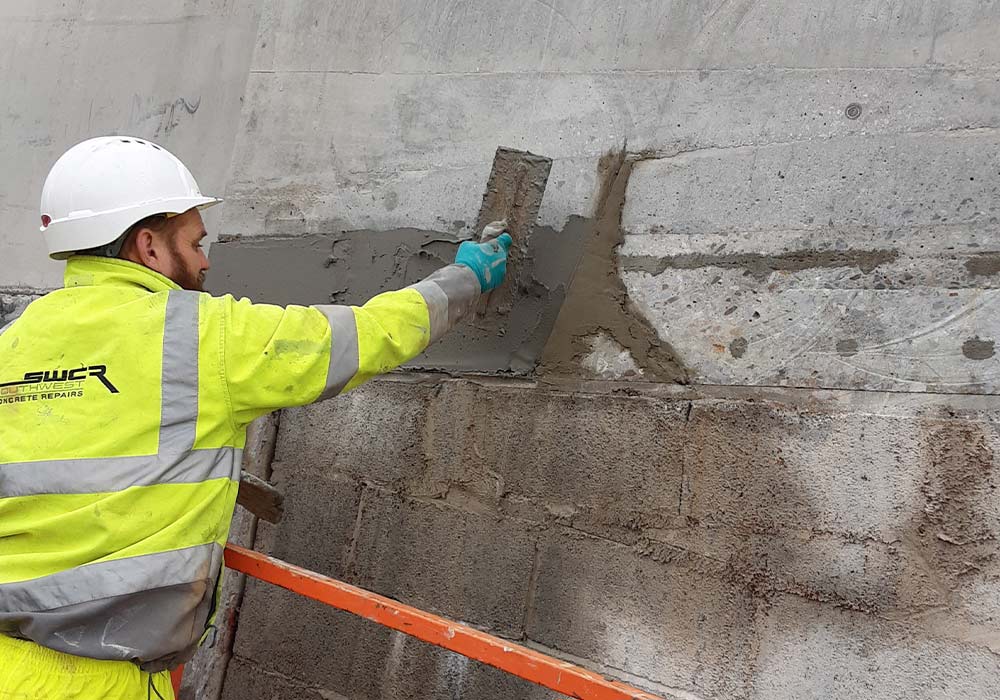
When Should You Hire a Professional for Concrete Wall Repairs?
Determining when to engage a professional for concrete wall repairs hinges on the complexity of the damage, available DIY techniques, and the necessity for specialized expertise to ensure optimal results.
Many homeowners in Brantford or Brant County may attempt DIY approaches for minor cracks or surface blemishes, relying on readily available repair kits and online tutorials.
However, for severe structural damage or intricate issues requiring intricate expertise, it becomes crucial to seek the services of a professional.
Specialized professionals possess the knowledge, tools, and experience to accurately assess the damage, provide durable repair solutions, and ensure that the repaired wall maintains its structural integrity for the long term.
How Much Does Concrete Wall Repair Cost?
The cost of concrete wall repair varies based on factors such as the extent of damage, required assessments, and the selection of materials and techniques tailored to address specific repair needs effectively.
Assessments play a crucial role in determining the cost of repair. They help identify the root cause of the damage, providing valuable insights for effective and efficient repairs.
The materials chosen for the repair also significantly impact the overall cost. For instance, opting for high-quality and durable materials may result in higher upfront costs. However, it can lead to long-term savings by reducing the need for frequent repairs.
When selecting materials, it is essential to balance the upfront cost with the long-term benefits. This ensures that the repair provides lasting value and is a worthwhile investment.
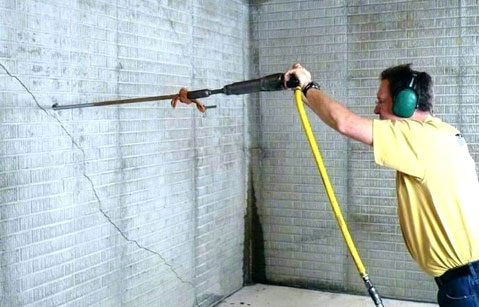
Frequently Asked Questions (FAQs)
How do I know when my concrete wall needs repairs?
Signs that your concrete wall may need repairs include cracks, spalling or crumbling, water stains, and bulging or leaning. If you notice any of these issues, it’s important to address them promptly to prevent further damage.
Can I repair small cracks in my concrete wall myself?
Small cracks in concrete walls can often be repaired using a concrete patching compound. However, for larger or more severe cracks, it’s best to hire a professional to ensure the repair is done properly and to prevent future issues.
What is the process for repairing a concrete wall?
The process for repairing a concrete wall will vary depending on the extent of the damage. It typically involves cleaning and preparing the surface, filling any cracks or holes, and then applying a concrete sealant or patching compound. In some cases, reinforcing materials may also be used.
How long will a concrete wall repair last?
The longevity of a concrete wall repair will depend on the quality of the repair and the condition of the wall. Properly done repairs can last for many years, but it’s important to address any underlying issues to prevent future damage.
Can I paint over a repaired concrete wall?
Yes, once a concrete wall has been properly repaired and allowed to cure, it can be painted over. It’s important to use a high-quality, exterior-grade paint and to follow all instructions for preparation and application for best results.
Do I need to hire a professional for concrete wall repairs?
It’s always best to hire a professional for concrete wall repairs, especially for more extensive damage. They have the knowledge, skills, and equipment to properly assess and repair the damage, ensuring a long-lasting and effective solution.

